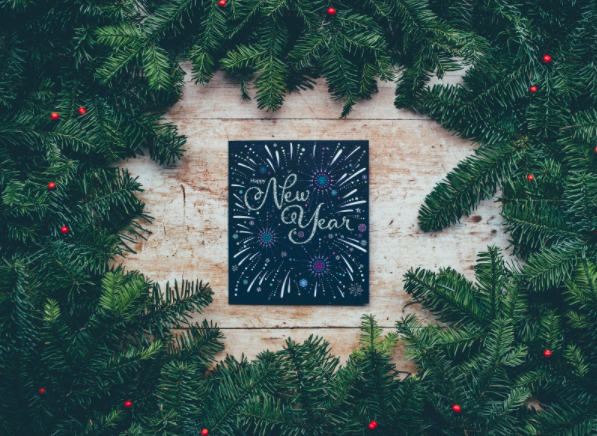
Girls, the holiday season is almost upon us again, and with the New Year comes new pressure to make some life-changing resolutions.
But why do we bother? Every single year we go through the same quixotic palaver and every single year we just end up feeling infinitely worse about ourselves when we inevitably fail.
While there are of course some simple steps you can take to ensure an increased chance of resolution success. There is another simpler way—make better resolutions.
So, this year forget the expensive gym memberships and complicated diet plans. Both are boring beyond belief. Instead, take a look at our little list of alternative resolutions below. Three simple little changes to your life that you will actually enjoy making and the best thing, all are completely and utterly free.
1. Sleep More
Forget for a moment about exercise and diet. The quickest and most painless way to a healthier you next year could be as simple as a change in your attitude to sleep.
An overwhelming body of research tells us that good sleep is vital for good physical and mental health.
Yet, despite this, the vast majority of us don’t get enough sleep. Why? Because we simply don’t take it seriously enough.
Poor sleep makes us grumpy, pessimistic, less attractive, less communicative and less healthy. Good sleep makes us the exact opposite.
And if your usual New Year goal is to lose weight, well then you’re in luck—it’s a scientifically backed fact that good sleep can help you lose weight.
The reasons for this a three-fold. Firstly, a well-rested mind has been proven to make better decisions, especially when it comes to dietary choices. Secondly, a well-rested person has more willpower and is able to resist temptation more. And thirdly, a well-rested body is better able to process and break down food in a more effective fashion than a tired body.
So, what to do. Well, getting better sleep could be as easy as going to bed earlier. It come from something as simple as changing what you sleep on (the Sleep Advisor has some great possibilities), or even just a subtle change in your bedtime habits, such as banning screens from the bedroom.
Next year, treat sleep with the respect it deserves and the rewards will be massive.
2. Laugh More
Obviously, we all enjoy a grin with our friends but it seems that laughter truly is one of the best medicines available.
And unlike those pills, the doctor prescribes, laughter is completely free!
A good giggle, it seems, sets in motion a chemical response from your brain that is as powerful as an antidepressant drug. With laughter, stress levels are reduced and your body’s immune system is given a welcome boost. Yay!
Research even shows that laughter is good for your heart. Exactly why is unknown. But it seems that having the tendency to rock out a good belly laugh causes an anti-inflammatory effect in the blood vessels around your heart, which can reduce the damaging effects of cardiovascular disease.
But how can you make a resolution to laugh more? Easy. Just work out what situations bring you the most fun and do them more frequently. This could be spending more time playing with your crazy cat, watching your nephew try to walk or just more time hanging out with your silliest girlfriends.
If you don’t have a cat, nephew or a silly friend, then get more creative, head to laughing yoga, the comedy club, the cinema, or just watch sillier shows on tv.
Laughter is laughter it doesn’t matter what causes it, highbrow or lowbrow, from a big belly laugh to a simple snigger, all of it will lead to a much-improved mood.
Luckily, you can even cheat the system and simply recycle happy memories from days gone past. Even reminiscing can cause endorphin – your body’s natural Prozac – to flood your bloodstream.
So this year make it a resolution to unleash that beautiful smile of yours more and laugh. An easy one eh!
3. Be more grateful
Why is saying ‘thank you’ sometimes so hard? It’s just two little words after all.
Expressing gratitude more frequently for what we have is actually a very powerful psychological trick to reprogram our brains into being more positive
So resolution number three is another easy one, every night just write down 3 things you are grateful for that day and say thank you to the universe.
This process is known as keeping a Gratitude Journal, and it works by retraining your mind to look for positives, rather than negatives, in each situation.
So from January instead of focusing on how rude one person is to you at work, you will instead start to see how friendly everyone else is.
Even just taking these two minutes each day to list three things you’re thankful for can have a profound change in your general positivity.
And if this sounds a little too wishy-washy for you, just try it as an experiment, for me. What is the worst that could happen?
So there we have it, three unexpected, free and super easy resolutions for the new year. Sleep more, laugh more and be grateful more. Master these three and next year is going to be a great one!
We hope you love the products we recommend! Just so you know, Brown Girl Magazine, LLC has collected a small fee to publish this article.




